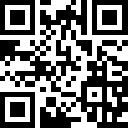2012年自考英语(一)语法复习资料:句法(下)
谓语$lesson$
谓语是用来说明主语做了什么动作或处在什么状态。谓语可以由动词来担任,一般放在主语的后面。
The child has been brought up by his mother.
这孩子是由他的妈妈带大的。
We don't know him very well.
我们不太了解他。
She speaks English fluently.转自环 球 网 校edu24ol.com
她英语讲得很流利。
表语 表语是用来说明主语的性质, 身份, 特征和状态。表语须和连系动词一起构成句子的复合谓语。表语一般放在系动词之后。表语可以由名词, 形容词或起名词和形容词作用的词和短语担任。
These desks are yellow. 这些桌子是黄色的。
I am all right. 我没事。
We are happy now. 我们现在很幸福。
It's over. 时间到了。
She is ten. 她十岁了。
My work is teaching English, 我的工作是教英语。
The dictionary is in the bag. 词典在书包里边。
My question is how you knew him.
我的问题是你如何认识他的。
宾语
宾语是谓语动作所涉及的对象, 它是动作的承受者,宾语可以由名词或起名词作用的成分担任,宾语一般放在谓语动词后面。
I saw a cat in the tree.
我看见树上有一只猫。转自环 球 网 校edu24ol.com
I want to go shopping.
我想去买东西。
He said he could be here.
他说他会来的。
We think you are right.
我们认为你是对的。
有些及物动词可以有两个宾语 ,其中一个宾语多指人,另一个宾语指物,指人的宾语叫做间接宾语,指物的宾语叫做直接宾语, 可以带两个宾语的动词有 bring,give, show, send, pass, tell 等。间接宾语一般放在直接宾语的前面,如果强调直接宾语可把直接宾语放在间接宾语的前面,但间接宾语前须加 " to "。
My father bought me a book.
我父亲给我买了一本书。
Give the rubber to me.
把橡皮给我。
Please give the letter to Xiao Li.
请把这封信给小李。
有些及物动词除跟一个宾语外,还需要加上宾语补足语,否则意思不完整, 它们一起构成复合宾语,复合宾语中宾语和后面的宾语补足语有一种逻辑上的主谓关系, 这也是判断是两个宾语还是复合宾语的依据, 宾语可以由名词或起名词作用的词担任。
We all call him Lao Wang.
我们都叫他老王。
Please color it red.
请给它涂上红颜色。
We found the little girl in the hill.
我们在山上找到了小女孩。
定语
用于描述名词,代词,短语或从句的性质,特征范围等情况的词叫做定语, 定语可以由名词,形容词和起名词和形容词作用的词,短语担任。如果定语是单个 词,定语放在被修饰词的前面,如果是词组,定语放在被修饰词的后面。
That is a beautiful flower.
那是一朵漂亮的花。
The TV set made in that factory is very good.
那个工厂生产的电视机很好。
This is my book, not your book.
这是我的书,不是你的书。
There are more than twenty trees in our school.
我们学校里有二十多棵树。
I have a lot of things to do.
我有好多要做的事情。
Our country is a developing country.
我们的国家是一个发展中的国家。
状语: 说明事物发生的时间,地点,原因,目的,结果方式, 条件或伴随情况,程度等情况的词叫状语。状语可以由副词, 短语以及从句来担任。
We went to the countryside last year.
去年我们去了乡下。
I often read the news paper at night.
我经常在晚上看报纸。
We study hard for our country.
我们为我们的国家而努力学习。
I'm late because I missed the bus.
由于误了车,所以我迟到了。
I go to school on foot.
我步行去上学。
简 单 句
简单句可分为下列五种形式:
1) 主语 + 系动词 + 表语。
I am a student.
我是一名学生。
You are a teacher.
你是一位教师。
She is a worker.
她是一个工人。
The picture is beautiful.
照片很漂亮。
The football is on the floor.
足球在地上。
2) 主语 + 不及物动词。
The sun rises in the east.
太阳从东方升起。
We arrived at Beijing yesterday.
我们昨天到达北京。
They have worked for tree hours this morning.
他们今早工作了三个小时。
3) 主语 + 及物动词 + 宾语
We help each other.
我们互相帮忙。
I have received a letter from my parents.
我收到一封我父母亲的信。
I bought a bike last year.
去年我买了一辆自行车。
4) 主语 + 及物动词 + 间接宾语 + 直接宾语
I gave him a book last week.
上周我给了他一本书。
My parents will buy me a gift.
我父母亲将给我买一件礼品。
5) 主语 + 及物动词 + 宾语 + 宾语补足语.
I heard him singing in the hall.
我听见他在大厅里唱歌。
I saw her watching TV play.
我看到她在看电视。
并 列 句
并列句: 用并列连接词把两个或两个以上的简单句连接在一起的句子叫并列句.常用的连接词如下:
also, and, but, either ... or, however, not only...but also, or, or else, so, still, yet, neither...nor.
并列句的构成:
简单句 + 连接词 + 简单句。
He studied hard and he passed the examination.
他学习努力并通过了考试。
Let's hurry, or we'll be late.
咱们赶紧点,要不就迟到啦。
I have been to Beijing many times but my parents have never been there.
我去过北京多次,但我父母亲从没去过。
复 合 句
复合句是由两个或两个以上的有主谓结构的句子用从属连词连接起来的句子。其中一个句子是主体,叫做主句,而其他的句子叫做从句。
从句由连接词引导, 它们是:
that, before, whether, if, although, because, as long as, as soon as, since, after, who, which, whom, what, whose, why, where, how,when,
从句尽管有主谓结构,但不能单独成为一个句子,在句中, 从句仅担任某个成分,根据担任的成分从句可分主语从句,宾语从句,表语从句,定语从句,状语从句。
主语从句 在句中起主语作用的句子叫做主语从句.
主语从句一般放在句首。
引导主语从句的词有下列:
that, who, whether, if, what, which, when, where, how, why.
Who cleaned the blackboard is not known yet.
谁擦的黑板还不知道。
What he said is not true.
他说的不是实话.
That he'll come to see us is really great.
他来看我们真是太好啦。
It's very good that he has passed the exam.
他通过了考试太好了。
宾语从句 在句中起宾语作用的句子叫做宾语从句,宾语从句放在动词后面。
引导宾语从句的词有下列。
that, if, whether, what, which, when, where, how, why,
I didn't expect that he had broken the glass.
我没有想到他把玻璃打破了。
Could you tell me who is your teacher?
你能告诉我谁是你的教师吗?
I don't know why he is absent.
我不知道为什么他不在。
表语从句 在句中起表语作用的句子叫做表语从句,表语从句放在系动词的后面。
引导表语从句的词有下列。
that, if, whether, what, which, when, where how, why等.
The question is whether he will join us next time.
问题是下次他是否跟我们一起干。
That is why I am late.
这就是我为什么迟到。
定语从句 在句中起定语作用的句子叫做定语从句,定语从句放在被修饰的名词后面。
引导定语从句的词有下列。
who, whose, that, which, whom, when, where why.
Do you know the man who is in the car.
你认识坐在汽车里的人吗?
This is the place where I was born.
这就是我出生的地方。
That is the reason why he lost his job.
这就是他为什么失去工作的原因。
状语从句 在句中起状语作用的句子叫做状语从句,状语从句一般放在句后,强调时放在句首。
He opened the windows since it was hot.
由于天气热,他打开了窗户。
When he was young,he couldn't go to school。
他年青的时候没能上学。
I'll let you know as soon as he come back.
他一回来我就告诉你。
最新资讯
- 考前必背!自学考试《中国近现代史纲要》论述题高频考点2024-10-19
- 自考报考策略:科学搭配科目,加速毕业进程2024-07-20
- 2025年考研考生五一假期,英语科目应该如何复习?2024-05-03
- 备考指南!2024年4月自学考试考前要做哪些准备?2024-03-31
- 考前备考冲刺!自考如何一次就过?2024-03-30
- 考点汇总:《中国近现代史纲要》论述题2024-03-25
- 备考资料:《中国近现代史纲要》简答题考点汇总2024-03-25
- 自考可以从哪些维度进行备考?2024-02-17
- @自考生,这里有备考技巧2024-02-17
- 自学考试备考复习方法!建议收藏2024-02-16
 打卡人数
打卡人数


